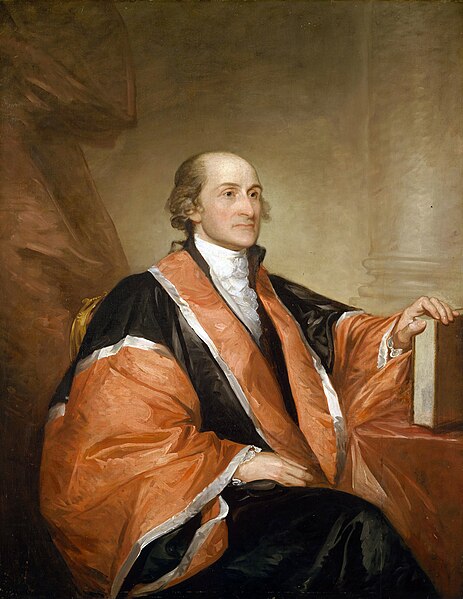John Jay was an American statesman, diplomat, abolitionist, signatory of the Treaty of Paris, and a Founding Father of the United States. He served from 1789 to 1795 as the first chief justice of the United States and from 1795 to 1801 as the second governor of New York. Jay directed U.S. foreign policy for much of the 1780s and was an important leader of the Federalist Party after the ratification of the United States Constitution in 1788.
Portrait by Gilbert Stuart, 1794
Jay's childhood home in Rye, New York is a New York State Historic Site and Westchester County Park
Jay's retirement home near Katonah, New York is a New York State Historic Site
The Treaty of Paris, by Benjamin West (1783) (Jay stands farthest to the left). The British delegation refused to pose for the painting, leaving it unfinished.
The Treaty of Paris, signed in Paris by representatives of King George III of Great Britain and representatives of the United States on September 3, 1783, officially ended the American Revolutionary War and recognized the Thirteen Colonies, which had been part of colonial British America, to be free, sovereign and independent States.
The first page of the Treaty of Paris, signed on September 3, 1783
Treaty of Paris, a 1783 portrait by Benjamin West depicting the American delegation at the Treaty of Paris, including (left to right): John Jay, John Adams, Benjamin Franklin, Henry Laurens, and William Temple Franklin. The British delegation refused to pose, and the portrait was never completed.
A commemorative plaque of the Treaty of Paris on the site where the treaty was signed, 56 Rue Jacob in Paris, on September 3, 1783
The last page of the Treaty of Paris







